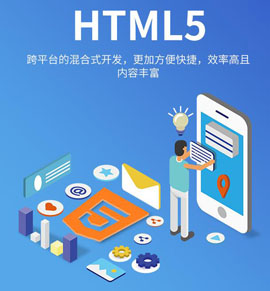Android开发UI设计问题解决方法
2021-10-14 分类: 网站建设
安卓开发UI设计的问题以及解决方法
1. 页面部分占用1/N的情况
解决方案;
使用线性布局,其属性android:orientation="vertical",android:weightSum="3"
线性布局里面有两个相对布局,分别设置两个相对布局的layout_weight

...
android:weightSum="3">
<!-- 上部 -->
<RelativeLayout
android:layout_weight="2"
android:id="@+id/top"
android:layout_width="match_parent"
android:layout_height="match_parent"
android:background="@color/colorPrimaryDark">
...
</RelativeLayout>
<!-- 中部和底部 -->
<RelativeLayout
android:id="@+id/middle"
android:layout_weight="1"
android:layout_width="match_parent"
android:layout_height="match_parent">
...
</RelativeLayout>
</LinearLayout>
2. 分割线的实现
分割线的实现,方法比较粗暴,直接使用ImageView组件实现
给其src设置为一个颜色,然后修改其weight(对应分割线的宽度)以及height(对应分割线的高度)属性以及位置设置
<ImageView
android:id="@+id/horLine2"
android:layout_width="match_parent"
android:layout_height="15dp"
android:layout_below="@+id/info"
android:layout_marginTop="15dp"
android:src="#1E000000"/>
3. 多个组件高度一致,顶对齐,并且水平均匀分布
例子:需要实现下图的情况,需要三个button高度一致,顶对齐并且水平均匀分布
在这里插入图片描述
首先需要了解一下约束布局以其使用
约束布局(ConstraintLayout),布局内组件按各种约束排列。每个组件受到三类约束,即其他组件,父容器(parent),基准线(GuideLine)。 约束布局代码可归纳为以下形式:app:layout_constraint[组件本身的位置]_to[目标位置]Of="[目标id]"。因此若想要组件水平居中,只需设置组件的左右边界与父容器的左右边界分别对齐。同理,组件的垂直居中也可以这么设置。
再思考本问题,是否也能使用约束布局来完成呢?使用约束布局,将三个按钮放在一个约束布局里面,每个按钮视图的左侧或者右侧与需要的对齐按钮的相应侧对齐即可,则组件之间就可以处于均匀分布了。
<android.support.constraint.ConstraintLayout
android:layout_width="match_parent"
android:layout_height="wrap_content">
<Button
app:layout_constraintRight_toLeftOf="@+id/loadBtn"
app:layout_constraintLeft_toLeftOf="parent"
android:id="@+id/saveBtn"
android:text="SAVE"
android:layout_width="wrap_content"
android:layout_height="wrap_content" />
<Button
android:id="@+id/loadBtn"
android:text="LOAD"
app:layout_constraintLeft_toRightOf="@+id/saveBtn"
app:layout_constraintRight_toLeftOf="@+id/clearBtn"
android:layout_width="wrap_content"
android:layout_height="wrap_content" />
<Button
android:layout_width="wrap_content"
android:layout_height="wrap_content"
app:layout_constraintLeft_toRightOf="@+id/loadBtn"
app:layout_constraintRight_toRightOf="parent"
android:id="@+id/clearBtn"
android:text="CLEAR"/>
</android.support.constraint.ConstraintLayout>
安卓UI界面设计的方式;
用户界面在程序开发中十分重要,一个好的用户界面设计需要考虑到用户使用体验、是否美观方便等。在界面设计的过程中,需要考虑如何制作出UI界面,怎么样控制UI界面两大块。
本文主要介绍通过两种方式来进行界面设计:
1、通过xml文件进行界面设计
2、通过代码控制进行界面设计
一、通过xml文件进行界面设计
打开Android Studio,建立工程,在res/layout下存放的是界面布局文件。双击创建的文件,左边是界面设计,右边对应了界面设计的xml文本。
1>在左边控件中,拖动一个button到右边的手机界面中,之后点击上线画圈右边的text查看文本,可以看到xml已经编写完成。
2>切换到代码目录,打开之前创建的MainActivity,在onCreate()方法中:
setContentView(R.layout.activity_main); //将编写的界面显示到手机屏幕
MainActivity添加两个私有数据成员:
private TextView tv;
private Button bt;
onCreate()里面初始化tv和bt,并给bt添加监听事件
tv = (TextView)findViewById(R.id.textView);//控件初始化
bt = (Button) findViewById(R.id.button);//控件初始化
bt.setOnClickListener(new View.OnClickListener() {
@Override
public void onClick(View v) {
tv.setText("你点击了按钮!");
}
);//添加监听
运行程序,点击按钮,原来的hello world!文本发生改变。在这里,两个控件都是通过xml文件定义的,我们在代码中实现了一个监听器,也就是界面的控制逻辑。
实例:
通过代码进行界面设计时,我们建立一个TextView控件来写标题;建立一个ImageView控件来写标题。先将图片复制到res/drawable目录下,然后通过app:srcCompat=”@drawable/sysu”来引用;建立两个TextView控件,用来写“学号”和“密码”,设置建立两个EditView控件,用来输入学号和密码;建立一个RadioGroup,之后再在里面建立两个单选按钮RadioButton。
<?xml version="1.0" encoding="utf-8"?>
<android.support.constraint.ConstraintLayout xmlns:android="http://schemas.android.com/apk/res/android"
xmlns:app="http://schemas.android.com/apk/res-auto"
xmlns:tools="http://schemas.android.com/tools"
android:layout_width="match_parent"
android:layout_height="match_parent"
tools:context="com.example.yc.sysu.MainActivity">
<TextView
android:id="@+id/title"
android:layout_width="wrap_content"
android:layout_height="wrap_content"
android:text="学生信息系统"
android:textSize="20sp"
android:textColor="#000000"
app:layout_constraintTop_toTopOf="parent"
android:layout_marginTop="20dp"
app:layout_constraintLeft_toLeftOf="parent"
app:layout_constraintRight_toRightOf="parent"/>
<ImageView
android:id="@+id/icon"
android:layout_width="104dp"
android:layout_height="104dp"
app:srcCompat="@drawable/sysu"
app:layout_constraintTop_toBottomOf="@id/title"
android:layout_marginTop="20dp"
app:layout_constraintLeft_toLeftOf="parent"
app:layout_constraintRight_toRightOf="parent" />
<TextView
android:id="@+id/user_id"
android:text="学号:"
android:textColor="#000000"
android:textSize="18sp"
android:layout_width="wrap_content"
android:layout_height="wrap_content"
app:layout_constraintLeft_toLeftOf="parent"
android:layout_marginLeft="20dp"
app:layout_constraintTop_toBottomOf="@id/icon"
android:layout_marginTop="20dp" />
<TextView
android:id="@+id/user_pwd"
android:text="密码:"
android:textColor="#000000"
android:textSize="18sp"
android:layout_width="wrap_content"
android:layout_height="wrap_content"
app:layout_constraintLeft_toLeftOf="parent"
android:layout_marginLeft="20dp"
app:layout_constraintTop_toBottomOf="@id/user_id"
android:layout_marginTop="20dp"/>
<EditText
android:id="@+id/text_userid"
android:hint="请输入学号"
android:textColor="#000000"
android:textSize="18sp"
android:paddingTop="0dp"
android:digits="0123456789"
android:layout_width="fill_parent"
android:layout_height="wrap_content"
app:layout_constraintTop_toTopOf="@id/user_id"
app:layout_constraintLeft_toRightOf="@+id/user_id"
app:layout_constraintRight_toRightOf="parent"
android:layout_marginRight="20dp"/>
<EditText
android:id="@+id/text_userpwd"
android:hint="请输入密码"
android:textColor="#000000"
android:textSize="18sp"
android:password="true"
android:paddingTop="0dp"
android:layout_width="fill_parent"
android:layout_height="wrap_content"
app:layout_constraintTop_toTopOf="@id/user_pwd"
app:layout_constraintLeft_toRightOf="@+id/user_pwd"
app:layout_constraintRight_toRightOf="parent"
android:layout_marginRight="20dp" />
<RadioGroup
android:id="@+id/radioButton"
android:orientation="horizontal"
android:layout_width="wrap_content"
android:layout_height="wrap_content"
app:layout_constraintLeft_toLeftOf="parent"
app:layout_constraintRight_toRightOf="parent"
app:layout_constraintTop_toBottomOf="@id/user_pwd"
android:layout_marginTop="30dp">
<RadioButton
android:id="@+id/radioButton1"
android:text="学生"
android:textColor="#000000"
android:textSize="18sp"
android:checked="true"
android:layout_width="wrap_content"
android:layout_height="wrap_content"/>
<RadioButton
android:id="@+id/radioButton2"
android:text="教职工"
android:textColor="#000000"
android:textSize="18sp"
android:layout_width="wrap_content"
android:layout_height="wrap_content"
android:layout_marginLeft="10dp"/>
</RadioGroup>
<View
android:id="@+id/button_box"
android:layout_height="50dp"
android:layout_width="185dp"
app:layout_constraintTop_toBottomOf="@id/radioButton"
android:layout_marginTop="20dp"
app:layout_constraintLeft_toLeftOf="parent"
app:layout_constraintRight_toRightOf="parent"/>
<Button
android:id="@+id/button1"
android:text="登录"
android:textColor="#ffffff"
android:background="@drawable/shape"
android:textSize="18sp"
android:layout_width="wrap_content"
android:layout_height="wrap_content"
app:layout_constraintLeft_toLeftOf="@id/button_box"
app:layout_constraintTop_toTopOf="@id/button_box" />
<Button
android:id="@+id/button2"
android:text="注册"
android:textColor="#ffffff"
android:background="@drawable/shape"
android:textSize="18sp"
android:layout_width="wrap_content"
android:layout_height="wrap_content"
app:layout_constraintLeft_toRightOf="@id/button1"
android:layout_marginLeft="10dp"
app:layout_constraintTop_toTopOf="@id/button_box"/>
</android.support.constraint.ConstraintLayout>
shape.xml
<?xml version="1.0" encoding="utf-8"?> <shape xmlns:android="http://schemas.android.com/apk/res/android"
android:shape="rectangle"> <solid android:color="#3f51b5"/> <corners android:radius="10dip"/> <padding
android:bottom="5dp"
android:top="5dp"
android:left="10dp"
android:right="10dp"/> </shape>
<?xml version="1.0" encoding="utf-8"?>
<shape xmlns:android="http://schemas.android.com/apk/res/android"
android:shape="rectangle">
<solid android:color="#3f51b5"/>
<corners android:radius="10dip"/>
<padding
android:bottom="5dp"
android:top="5dp"
android:left="10dp"
android:right="10dp"/>
</shape>
二、通过代码进行界面设计
定义MainActivity的私有成员:
private TextView tv;
private Button bt;
重写onCreate(),通过new定义一个线性布局和Button按钮和文本框控件,布局里面加入控件,控件加上监听事件
LinearLayout l = new LinearLayout(this); //定义线性布局
setContentView(l); //线性布局加入屏幕
tv = new TextView(this); //定义控件
bt = new Button(this); //定义控件
l.addView(bt); //加入布局
l.addView(tv); //加入布局
bt.setOnClickListener(new View.OnClickListener() {
@Override
public void onClick(View v) {
tv.setText("你点击了按钮!");
}
}); //监听事件
运行代码,点击按钮,将会出现”你点击了按钮!”的文本提示。
1. 页面部分占用1/N的情况
解决方案;
使用线性布局,其属性android:orientation="vertical",android:weightSum="3"
线性布局里面有两个相对布局,分别设置两个相对布局的layout_weight
关于其中的权重比为2:1,参阅Android布局中的layout_weight和weightSum属性的详解及使用

<LinearLayout
android:orientation="vertical"...
android:weightSum="3">
<!-- 上部 -->
<RelativeLayout
android:layout_weight="2"
android:id="@+id/top"
android:layout_width="match_parent"
android:layout_height="match_parent"
android:background="@color/colorPrimaryDark">
...
</RelativeLayout>
<!-- 中部和底部 -->
<RelativeLayout
android:id="@+id/middle"
android:layout_weight="1"
android:layout_width="match_parent"
android:layout_height="match_parent">
...
</RelativeLayout>
</LinearLayout>
2. 分割线的实现
分割线的实现,方法比较粗暴,直接使用ImageView组件实现
给其src设置为一个颜色,然后修改其weight(对应分割线的宽度)以及height(对应分割线的高度)属性以及位置设置
<ImageView
android:id="@+id/horLine2"
android:layout_width="match_parent"
android:layout_height="15dp"
android:layout_below="@+id/info"
android:layout_marginTop="15dp"
android:src="#1E000000"/>
3. 多个组件高度一致,顶对齐,并且水平均匀分布
例子:需要实现下图的情况,需要三个button高度一致,顶对齐并且水平均匀分布
在这里插入图片描述
首先需要了解一下约束布局以其使用
约束布局(ConstraintLayout),布局内组件按各种约束排列。每个组件受到三类约束,即其他组件,父容器(parent),基准线(GuideLine)。 约束布局代码可归纳为以下形式:app:layout_constraint[组件本身的位置]_to[目标位置]Of="[目标id]"。因此若想要组件水平居中,只需设置组件的左右边界与父容器的左右边界分别对齐。同理,组件的垂直居中也可以这么设置。
再思考本问题,是否也能使用约束布局来完成呢?使用约束布局,将三个按钮放在一个约束布局里面,每个按钮视图的左侧或者右侧与需要的对齐按钮的相应侧对齐即可,则组件之间就可以处于均匀分布了。
<android.support.constraint.ConstraintLayout
android:layout_width="match_parent"
android:layout_height="wrap_content">
<Button
app:layout_constraintRight_toLeftOf="@+id/loadBtn"
app:layout_constraintLeft_toLeftOf="parent"
android:id="@+id/saveBtn"
android:text="SAVE"
android:layout_width="wrap_content"
android:layout_height="wrap_content" />
<Button
android:id="@+id/loadBtn"
android:text="LOAD"
app:layout_constraintLeft_toRightOf="@+id/saveBtn"
app:layout_constraintRight_toLeftOf="@+id/clearBtn"
android:layout_width="wrap_content"
android:layout_height="wrap_content" />
<Button
android:layout_width="wrap_content"
android:layout_height="wrap_content"
app:layout_constraintLeft_toRightOf="@+id/loadBtn"
app:layout_constraintRight_toRightOf="parent"
android:id="@+id/clearBtn"
android:text="CLEAR"/>
</android.support.constraint.ConstraintLayout>
安卓UI界面设计的方式;
用户界面在程序开发中十分重要,一个好的用户界面设计需要考虑到用户使用体验、是否美观方便等。在界面设计的过程中,需要考虑如何制作出UI界面,怎么样控制UI界面两大块。
本文主要介绍通过两种方式来进行界面设计:
1、通过xml文件进行界面设计
2、通过代码控制进行界面设计
一、通过xml文件进行界面设计
打开Android Studio,建立工程,在res/layout下存放的是界面布局文件。双击创建的文件,左边是界面设计,右边对应了界面设计的xml文本。
1>在左边控件中,拖动一个button到右边的手机界面中,之后点击上线画圈右边的text查看文本,可以看到xml已经编写完成。
2>切换到代码目录,打开之前创建的MainActivity,在onCreate()方法中:
setContentView(R.layout.activity_main); //将编写的界面显示到手机屏幕
MainActivity添加两个私有数据成员:
private TextView tv;
private Button bt;
onCreate()里面初始化tv和bt,并给bt添加监听事件
tv = (TextView)findViewById(R.id.textView);//控件初始化
bt = (Button) findViewById(R.id.button);//控件初始化
bt.setOnClickListener(new View.OnClickListener() {
@Override
public void onClick(View v) {
tv.setText("你点击了按钮!");
}
);//添加监听
运行程序,点击按钮,原来的hello world!文本发生改变。在这里,两个控件都是通过xml文件定义的,我们在代码中实现了一个监听器,也就是界面的控制逻辑。
实例:
通过代码进行界面设计时,我们建立一个TextView控件来写标题;建立一个ImageView控件来写标题。先将图片复制到res/drawable目录下,然后通过app:srcCompat=”@drawable/sysu”来引用;建立两个TextView控件,用来写“学号”和“密码”,设置建立两个EditView控件,用来输入学号和密码;建立一个RadioGroup,之后再在里面建立两个单选按钮RadioButton。
activity_main.xml
<?xml version="1.0" encoding="utf-8"?>
<android.support.constraint.ConstraintLayout xmlns:android="http://schemas.android.com/apk/res/android"
xmlns:app="http://schemas.android.com/apk/res-auto"
xmlns:tools="http://schemas.android.com/tools"
android:layout_width="match_parent"
android:layout_height="match_parent"
tools:context="com.example.yc.sysu.MainActivity">
<TextView
android:id="@+id/title"
android:layout_width="wrap_content"
android:layout_height="wrap_content"
android:text="学生信息系统"
android:textSize="20sp"
android:textColor="#000000"
app:layout_constraintTop_toTopOf="parent"
android:layout_marginTop="20dp"
app:layout_constraintLeft_toLeftOf="parent"
app:layout_constraintRight_toRightOf="parent"/>
<ImageView
android:id="@+id/icon"
android:layout_width="104dp"
android:layout_height="104dp"
app:srcCompat="@drawable/sysu"
app:layout_constraintTop_toBottomOf="@id/title"
android:layout_marginTop="20dp"
app:layout_constraintLeft_toLeftOf="parent"
app:layout_constraintRight_toRightOf="parent" />
<TextView
android:id="@+id/user_id"
android:text="学号:"
android:textColor="#000000"
android:textSize="18sp"
android:layout_width="wrap_content"
android:layout_height="wrap_content"
app:layout_constraintLeft_toLeftOf="parent"
android:layout_marginLeft="20dp"
app:layout_constraintTop_toBottomOf="@id/icon"
android:layout_marginTop="20dp" />
<TextView
android:id="@+id/user_pwd"
android:text="密码:"
android:textColor="#000000"
android:textSize="18sp"
android:layout_width="wrap_content"
android:layout_height="wrap_content"
app:layout_constraintLeft_toLeftOf="parent"
android:layout_marginLeft="20dp"
app:layout_constraintTop_toBottomOf="@id/user_id"
android:layout_marginTop="20dp"/>
<EditText
android:id="@+id/text_userid"
android:hint="请输入学号"
android:textColor="#000000"
android:textSize="18sp"
android:paddingTop="0dp"
android:digits="0123456789"
android:layout_width="fill_parent"
android:layout_height="wrap_content"
app:layout_constraintTop_toTopOf="@id/user_id"
app:layout_constraintLeft_toRightOf="@+id/user_id"
app:layout_constraintRight_toRightOf="parent"
android:layout_marginRight="20dp"/>
<EditText
android:id="@+id/text_userpwd"
android:hint="请输入密码"
android:textColor="#000000"
android:textSize="18sp"
android:password="true"
android:paddingTop="0dp"
android:layout_width="fill_parent"
android:layout_height="wrap_content"
app:layout_constraintTop_toTopOf="@id/user_pwd"
app:layout_constraintLeft_toRightOf="@+id/user_pwd"
app:layout_constraintRight_toRightOf="parent"
android:layout_marginRight="20dp" />
<RadioGroup
android:id="@+id/radioButton"
android:orientation="horizontal"
android:layout_width="wrap_content"
android:layout_height="wrap_content"
app:layout_constraintLeft_toLeftOf="parent"
app:layout_constraintRight_toRightOf="parent"
app:layout_constraintTop_toBottomOf="@id/user_pwd"
android:layout_marginTop="30dp">
<RadioButton
android:id="@+id/radioButton1"
android:text="学生"
android:textColor="#000000"
android:textSize="18sp"
android:checked="true"
android:layout_width="wrap_content"
android:layout_height="wrap_content"/>
<RadioButton
android:id="@+id/radioButton2"
android:text="教职工"
android:textColor="#000000"
android:textSize="18sp"
android:layout_width="wrap_content"
android:layout_height="wrap_content"
android:layout_marginLeft="10dp"/>
</RadioGroup>
<View
android:id="@+id/button_box"
android:layout_height="50dp"
android:layout_width="185dp"
app:layout_constraintTop_toBottomOf="@id/radioButton"
android:layout_marginTop="20dp"
app:layout_constraintLeft_toLeftOf="parent"
app:layout_constraintRight_toRightOf="parent"/>
<Button
android:id="@+id/button1"
android:text="登录"
android:textColor="#ffffff"
android:background="@drawable/shape"
android:textSize="18sp"
android:layout_width="wrap_content"
android:layout_height="wrap_content"
app:layout_constraintLeft_toLeftOf="@id/button_box"
app:layout_constraintTop_toTopOf="@id/button_box" />
<Button
android:id="@+id/button2"
android:text="注册"
android:textColor="#ffffff"
android:background="@drawable/shape"
android:textSize="18sp"
android:layout_width="wrap_content"
android:layout_height="wrap_content"
app:layout_constraintLeft_toRightOf="@id/button1"
android:layout_marginLeft="10dp"
app:layout_constraintTop_toTopOf="@id/button_box"/>
</android.support.constraint.ConstraintLayout>
shape.xml
<?xml version="1.0" encoding="utf-8"?> <shape xmlns:android="http://schemas.android.com/apk/res/android"
android:shape="rectangle"> <solid android:color="#3f51b5"/> <corners android:radius="10dip"/> <padding
android:bottom="5dp"
android:top="5dp"
android:left="10dp"
android:right="10dp"/> </shape>
<?xml version="1.0" encoding="utf-8"?>
<shape xmlns:android="http://schemas.android.com/apk/res/android"
android:shape="rectangle">
<solid android:color="#3f51b5"/>
<corners android:radius="10dip"/>
<padding
android:bottom="5dp"
android:top="5dp"
android:left="10dp"
android:right="10dp"/>
</shape>
二、通过代码进行界面设计
定义MainActivity的私有成员:
private TextView tv;
private Button bt;
重写onCreate(),通过new定义一个线性布局和Button按钮和文本框控件,布局里面加入控件,控件加上监听事件
LinearLayout l = new LinearLayout(this); //定义线性布局
setContentView(l); //线性布局加入屏幕
tv = new TextView(this); //定义控件
bt = new Button(this); //定义控件
l.addView(bt); //加入布局
l.addView(tv); //加入布局
bt.setOnClickListener(new View.OnClickListener() {
@Override
public void onClick(View v) {
tv.setText("你点击了按钮!");
}
}); //监听事件
运行代码,点击按钮,将会出现”你点击了按钮!”的文本提示。
当前题目:Android开发UI设计问题解决方法
文章分享:/news24/131174.html
成都网站建设公司_创新互联,为您提供网页设计公司、网站排名、定制开发、网站内链、网站收录、软件开发
声明:本网站发布的内容(图片、视频和文字)以用户投稿、用户转载内容为主,如果涉及侵权请尽快告知,我们将会在第一时间删除。文章观点不代表本网站立场,如需处理请联系客服。电话:028-86922220;邮箱:631063699@qq.com。内容未经允许不得转载,或转载时需注明来源: 创新互联
猜你还喜欢下面的内容
- 浅谈黑链对网站有影响吗? 2021-10-14
- 如何叫新人了解网站SEO优化? 2021-10-14
- 必须掌握企业网站制作的三个核心问题 2021-10-14
- 你记得给你的网站域名续费了吗?忘记了怎么办? 2021-10-14
- 2021接下来的seo该怎么做 2021-10-14
- 问答推广之如何通过回答别人的问题来推广自己的网站 2021-10-14

- 网站优化时如何去吸引蜘蛛? 2021-10-14
- SEO必须掌握的六大优化技能 2021-10-14
- 企业为什么要大胆尝试,敢于投资SEO推广 2021-10-14
- 企业官网如何进行后期打理 2021-10-14
- 新品牌如何推广网站-深圳网站制作 2021-10-14
- 杭州网站建设-政府网站建设的管理体制不完善应该如何改进? 2021-10-14
- 社区网站存在的问题有哪些 2021-10-14
- 制作营销型网站对公司有何益处? 2021-10-14
- 制约个人网站发展七点重要因素 2021-10-14
- 网站为什么要交换友链 2021-10-14
- 让网站有竞争力度和生存空间 2021-10-14
- 做好百度竞价主要注意什么问题 2021-10-14
- 如何做好网站推广方案需从这些方面入手 2021-10-14